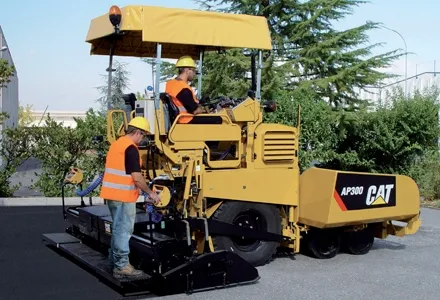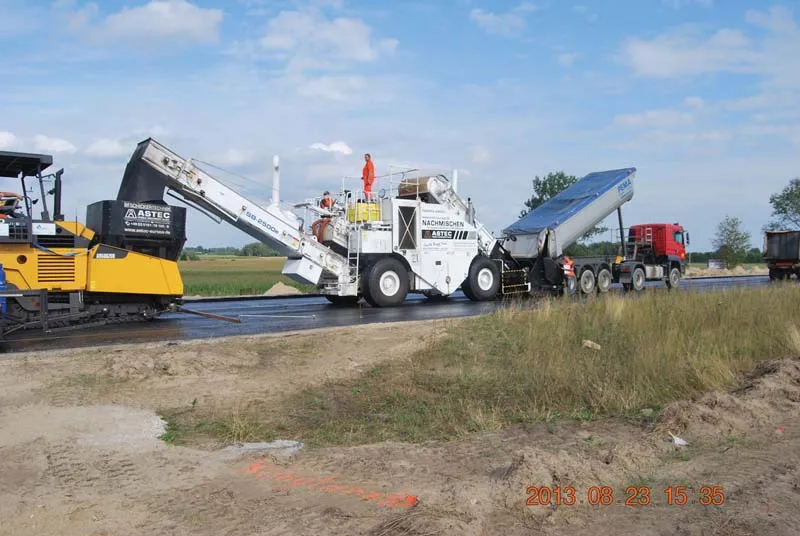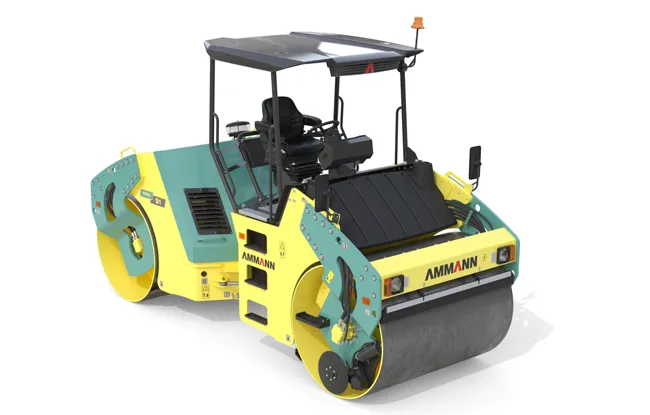French paving contractor Révillon is now using a new Cat AP300 wheeled asphalt paver, which replaces one of its two older Bitelli BB730 units. The firm took delivery of a field follow unit of the AP300, the model Caterpillar has developed to replace the BB730. Supplied by French Cat dealer Bergerat-Monnoyeur, the AP300 has met Révillon's expectations in terms of performance and is said to offer benefits over the earlier BB730. The new machine is aimed at the 6-8tonne, 1.7m paving width but is said to offer
July 20, 2012
Read time: 2 mins

French paving contractor Révillon is now using a new Cat AP300 wheeled asphalt paver, which replaces one of its two older Bitelli BB730 units. The firm took delivery of a field follow unit of the AP300, the model 178 Caterpillar has developed to replace the BB730. Supplied by French Cat dealer Bergerat-Monnoyeur, the AP300 has met Révillon's expectations in terms of performance and is said to offer benefits over the earlier BB730. The new machine is aimed at the 6-8tonne, 1.7m paving width but is said to offer better manoeuvrability, versatility and transportability. Other upgrades include improvements to the tractive effort, operator interface, material handling system, electrics and hydraulics.
Révillon uses the AP300 mainly to repave municipality roads or for small industrial developments and the machine is able to carry out resurfacing and maintenance with either hot and/or modified bituminous mix and aggregate production. Its high transfer speed allows the paver to cover short distances quickly from one jobsite to another, without the need of a trailer.
The AP300 has been demonstrating its versatility in Italy as well. Cat dealer CGT was pleased to provide an AP300 field-follow unit to Mair Josef & Company of Bolzano. The firm has considerable experience with Bitelli and Cat machines, including several Bitelli asphalt pavers and cold planers, as well as a Cat CB334 vibratory asphalt compactor and is said to be pleased with the performance of the AP300.
Révillon uses the AP300 mainly to repave municipality roads or for small industrial developments and the machine is able to carry out resurfacing and maintenance with either hot and/or modified bituminous mix and aggregate production. Its high transfer speed allows the paver to cover short distances quickly from one jobsite to another, without the need of a trailer.
The AP300 has been demonstrating its versatility in Italy as well. Cat dealer CGT was pleased to provide an AP300 field-follow unit to Mair Josef & Company of Bolzano. The firm has considerable experience with Bitelli and Cat machines, including several Bitelli asphalt pavers and cold planers, as well as a Cat CB334 vibratory asphalt compactor and is said to be pleased with the performance of the AP300.









